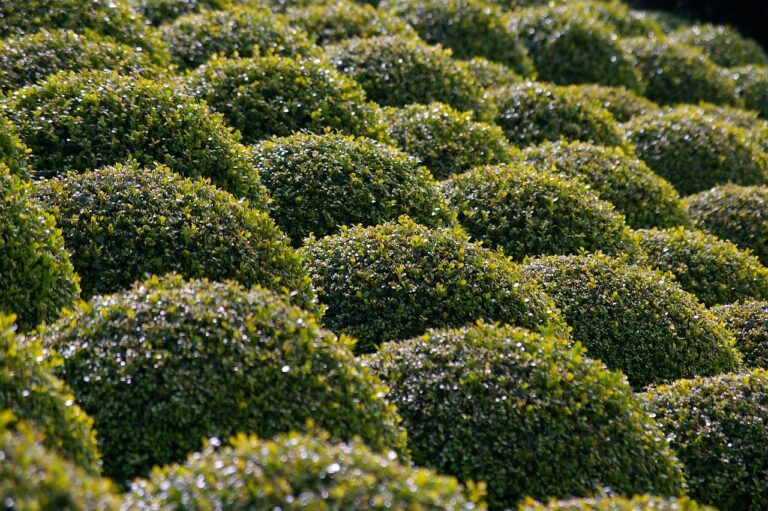Exploring the Characteristics of Tall Thin Evergreen Trees
Are you curious about tall, thin evergreen trees? Look no further, as this article explores their fascinating characteristics. From their impressive height and fast growth rate to their unique leaf shape and color, you'll discover what sets these trees apart. They also have a distinctive branching pattern, trunk and bark characteristics, and a robust root system. With their evergreen foliage and year-round appeal, these trees provide a wildlife habitat and offer ecosystem benefits. Learn about maintenance and pruning requirements, popular varieties, and landscaping uses. Get ready to delve into the world of tall, thin evergreen trees!
Height and Growth Rate
You will now explore the height and growth rate of tall thin evergreen trees. These majestic trees can reach impressive heights, often standing tall and proud, serving as a beautiful addition to any landscape. On average, tall thin evergreen trees can grow up to 40 to 80 feet in height, providing a striking presence in gardens, parks, and forests. Their slim and slender trunks allow them to sway gracefully in the wind, adding to their elegance. In terms of growth rate, these trees have a moderate to fast pace, with an annual increase of approximately 1 to 3 feet. With their steady growth and towering stature, tall thin evergreen trees offer a sense of grandeur and beauty that is truly remarkable.
Leaf Shape and Color
The leaf shape and color of tall thin evergreen trees add to their overall aesthetic appeal. The leaves of these magnificent trees are typically long and slender, resembling needles or scales. This unique leaf shape allows them to retain moisture and withstand harsh weather conditions, making them well-adapted to their environment. The color of the leaves varies depending on the species, ranging from vibrant shades of green to blue-green or even silver. This diversity in leaf color adds visual interest to the landscape and creates a striking contrast against other foliage. The combination of their slender shape and beautiful hues makes tall thin evergreen trees a stunning addition to any garden or landscape, providing a sense of tranquility and natural beauty that serves to uplift and inspire.
Branching Pattern
Branching pattern in tall thin evergreen trees is characterized by a graceful and symmetrical arrangement of branches. The branches tend to grow in a vertical fashion, reaching upwards towards the sky. They are evenly spaced along the trunk, creating a balanced and harmonious appearance. The branches themselves are slender and flexible, allowing the tree to sway gently in the wind without breaking. This branching pattern not only enhances the tree's aesthetic appeal but also serves a practical purpose. The symmetrical arrangement of branches helps to evenly distribute the weight of the foliage, making the tree more resistant to strong winds and heavy snowfall. It also allows sunlight to penetrate through the branches, ensuring that all parts of the tree receive adequate light for photosynthesis. Overall, the branching pattern of tall thin evergreen trees is a beautiful and functional feature that adds to their allure.
Trunk and Bark Characteristics
Moving on to the characteristics of the trunk and bark, let's explore the features that contribute to the overall appearance and resilience of tall thin evergreen trees. The trunk of these trees is typically straight and slender, providing them with the necessary support to withstand strong winds and heavy snow loads. The bark is smooth and thin, with a light gray or brown color that adds to the tree's aesthetic appeal. This bark also helps protect the tree from moisture loss and acts as a barrier against pests and diseases. Furthermore, the bark of tall thin evergreen trees often has vertical furrows or ridges, which give it a unique texture. These features combined make the trunk and bark of these trees not only visually pleasing but also functional in their ability to endure various environmental conditions.
Root System
To understand the resilience and stability of tall thin evergreen trees, it's important to delve into their root system. The root system of these majestic trees is a vital component that provides support and nourishment. The roots of tall thin evergreen trees are extensive and far-reaching, allowing them to anchor firmly into the ground. They possess a deep taproot, which grows vertically downwards, providing stability and anchorage. Additionally, they have lateral roots that spread horizontally, enabling them to absorb water and nutrients efficiently. The roots of these trees are strong and fibrous, intertwining with the soil particles and creating a solid foundation. They also have a symbiotic relationship with mycorrhizal fungi, which enhance nutrient absorption. This robust root system ensures that tall thin evergreen trees can withstand strong winds and harsh weather conditions, making them resilient and long-lasting.
Adaptability to Soil and Climate
As you explore the characteristics of tall thin evergreen trees, you will discover their remarkable adaptability to various soil types and climate conditions. These trees have developed mechanisms that allow them to thrive in a wide range of environments, making them valuable additions to landscapes in different regions. One of their notable adaptations is their ability to tolerate different soil types, including sandy, loamy, and clay soils. Their deep and extensive root systems enable them to access water and nutrients from the soil, ensuring their survival even in dry or nutrient-poor conditions. Additionally, tall thin evergreen trees can withstand diverse climate conditions, from hot and arid regions to cold and snowy areas. They are adept at conserving water through their narrow leaves and thick bark, reducing moisture loss and protecting themselves from extreme temperatures. This adaptability allows these trees to serve as resilient and reliable elements in landscaping, providing beauty and shade in various settings.
Evergreen Foliage and Year-round Appeal
With their dense and vibrant foliage, tall thin evergreen trees provide year-round beauty and appeal to your landscape. These trees are known for their ability to retain their leaves throughout the year, giving your garden a lush and vibrant look, even during the winter months. The evergreen foliage of these trees adds a touch of color and texture to your outdoor space, creating a visually pleasing environment. Whether you choose a towering Cypress or a slender Spruce, these trees offer a sense of permanence and structure to your garden, making them a popular choice for landscaping. Their year-round appeal ensures that you can enjoy a beautiful and inviting outdoor space no matter the season, providing a sanctuary for you and your loved ones to relax and enjoy nature's beauty.
Wildlife Habitat and Ecosystem Benefits
These tall thin evergreen trees not only add beauty to your landscape but also provide a valuable wildlife habitat and contribute to the overall health of the ecosystem. The dense foliage of these trees provides shelter, nesting sites, and protection for a variety of wildlife species. Birds, such as owls and woodpeckers, find refuge in the branches, while squirrels and chipmunks build their nests among the evergreen needles. In addition to providing habitat, these trees also play a crucial role in the ecosystem. They help to purify the air by absorbing pollutants and releasing oxygen, improving air quality for both humans and animals. The evergreen needles also capture and retain moisture, reducing the risk of soil erosion and maintaining a healthy soil ecosystem. By planting tall thin evergreen trees in your landscape, you are not only enhancing its beauty but also creating a thriving habitat for wildlife and contributing to the overall health of the ecosystem.
Maintenance and Pruning Requirements
To maintain the health and appearance of your tall thin evergreen trees, regular maintenance and pruning are essential. Pruning helps to remove dead or diseased branches, promotes better air circulation, and encourages new growth. Start by inspecting your trees and identifying any branches that are broken, crossing, or rubbing against each other. Use sharp pruning shears or a handsaw to carefully remove these branches, making clean cuts just outside the branch collar. Avoid cutting too close or leaving stubs, as this can lead to disease and decay. Additionally, thinning out the canopy can help reduce the risk of wind damage and improve the overall structure of the tree. Remember to prune during the dormant season to minimize stress on the tree. Regular maintenance and pruning will ensure that your tall thin evergreen trees remain healthy and beautiful for years to come.
Popular Varieties and Landscaping Uses
You can choose from a variety of popular tall thin evergreen trees that offer different landscaping uses. One such variety is the Italian Cypress (Cupressus sempervirens), which is known for its elegant, slender form. It can be used as a focal point in your landscape or to create a beautiful privacy screen. Another popular choice is the Leyland Cypress (x Cupressocyparis leylandii), which is fast-growing and can quickly provide a dense barrier against noise and wind. If you're looking for a tree with a unique shape, the Pencil Pine (Cupressus glabra) is a great option. Its columnar shape adds a striking vertical element to any garden. Lastly, the Blue Arrow Juniper (Juniperus scopulorum 'Blue Arrow') offers a vibrant blue-green color and is perfect for adding a pop of color to your landscape design. Consider these popular varieties when choosing tall thin evergreen trees for your landscaping needs.
Conclusion
In conclusion, tall thin evergreen trees have distinct characteristics that make them a valuable addition to any landscape. Their height and rapid growth rate provide a striking vertical element, while their leaf shape and color add visual interest. The branching pattern and trunk and bark characteristics contribute to their unique architectural appeal. Their deep root system ensures stability and resilience. With their evergreen foliage, these trees offer year-round beauty and provide habitat for wildlife. Proper maintenance and pruning will help maintain their form and health. Consider popular varieties for various landscaping uses.






